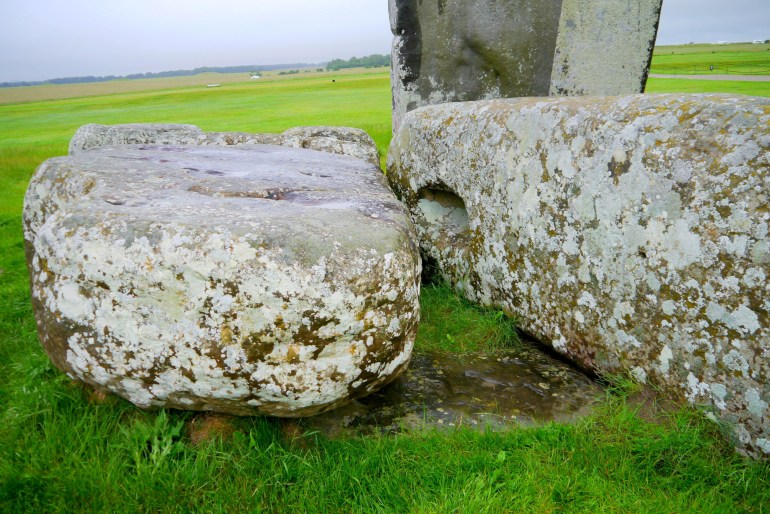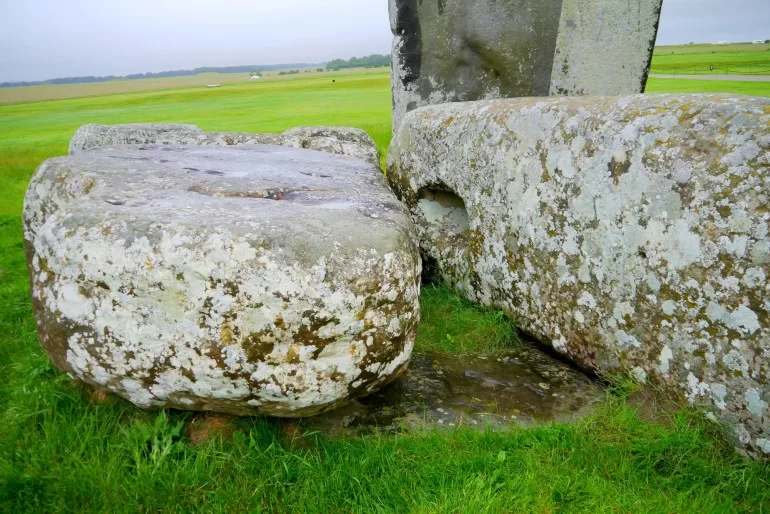The central stone of the famous British monument came from 750km (465 miles) away in Scotland, and not Wales as previously thought.
At the centre of Stonehenge lies the Altar Stone, a hefty slab of sandstone whose origin and purpose have been among the famed megalithic monument’s enduring mysteries for nearly 5,000 years.
Now a new study, published in the journal Nature, has revealed that the rectangular colossus was transported from northeast Scotland by Stonehenge’s creators to Salisbury Plain in southern England, some 750km (465 miles) away.
The stone’s geochemical fingerprint is a perfect match for bedrock found in Scotland, researchers said on Wednesday, solving one mystery but raising another: how did its prehistoric builders move the huge slab – weighing an estimated six tonnes – so far?

More recently, scientists have determined that the site’s upright sandstones came from relatively nearby Marlborough, while the bluestones arrayed near its centre came from Wales.
But the origin of the Altar Stone, a unique slab laying on its side at the heart of the circle, remained elusive.
‘Genuinely shocking’
The findings left the researchers stunned. No stone from any other monument dating to that time period is known to have been transported such a distance.
“We couldn’t believe it,” said Anthony Clarke, a doctoral student in geology at Curtin University in Australia and lead author of the study.
For more than 100 years, scientists believed the altar stone came from much closer Wales.
However tests along those lines always “drew a blank,” said Richard Bevins, a professor from Aberystwyth University, mid-Wales, and co-author of the study.
This prompted a team of British and Australian researchers to broaden their horizons – and in turn discover something “quite sensational”, he told AFP news agency.
Using chemical analysis, they determined that the Altar Stone came from Scotland’s Orcadian Basin.
“This is a genuinely shocking result,” study co-author Robert Ixer of University College London said in a statement.
The “astonishing” distance was the longest recorded journey for any stone at the time, said fellow co-author Nick Pearce of Aberystwyth University.
Whether people around 2,500 BC were capable of transporting such huge stones from Wales had already been a matter of heated debate among archaeologists and historians.
That a five-by-one-metre (16-by-three-feet) stone made the trip across much of the length of the United Kingdom suggests that the British Isles were home to a highly organised and well-connected society at the time, the researchers said.
They called for further research to find out exactly where in Scotland the stone came from – and how it made its way to Stonehenge.
To work out where it came from, the researchers fired laser beams into the crystals of a thin slice of the Altar Stone. The ratio of uranium and lead in these crystals act as “miniature clocks” for rocks, providing their age, said study co-author Chris Kirkland of Curtin University.
The team then compared the stone’s age to other rocks across the UK and found “with a high degree of certainty” that it came from the Orcadian Basin, Kirkland said.
Susan Greaney, an archaeologist at the UK’s University of Exeter who was not involved in the study, said it established the first “direct link” between southern England and northern Scotland during this time.
“The placement of this stone at the heart of the monument, on the solstice axis, shows that they thought this stone, and by implication, the connection with the area to the north, was incredibly important,” she said.
